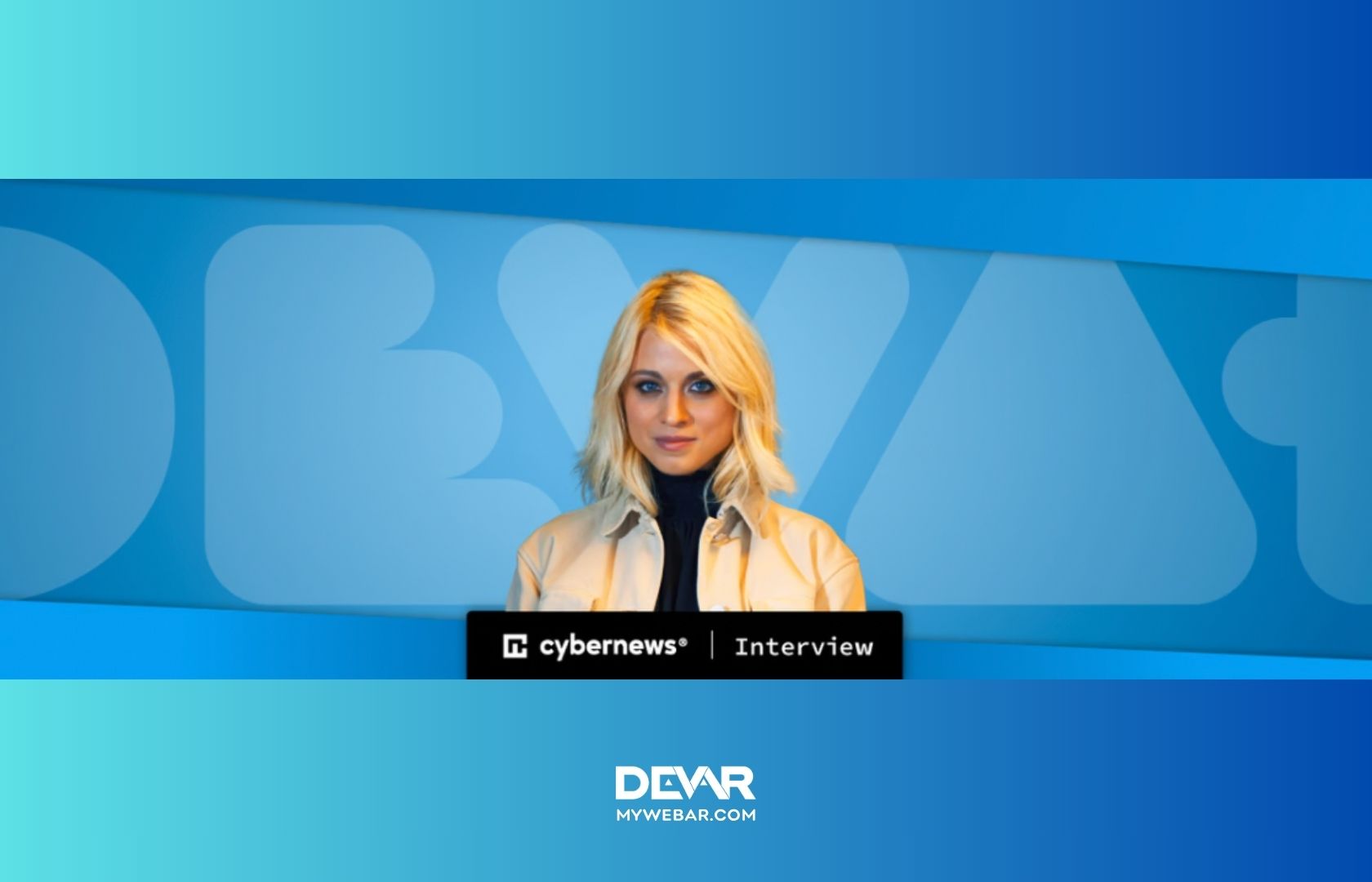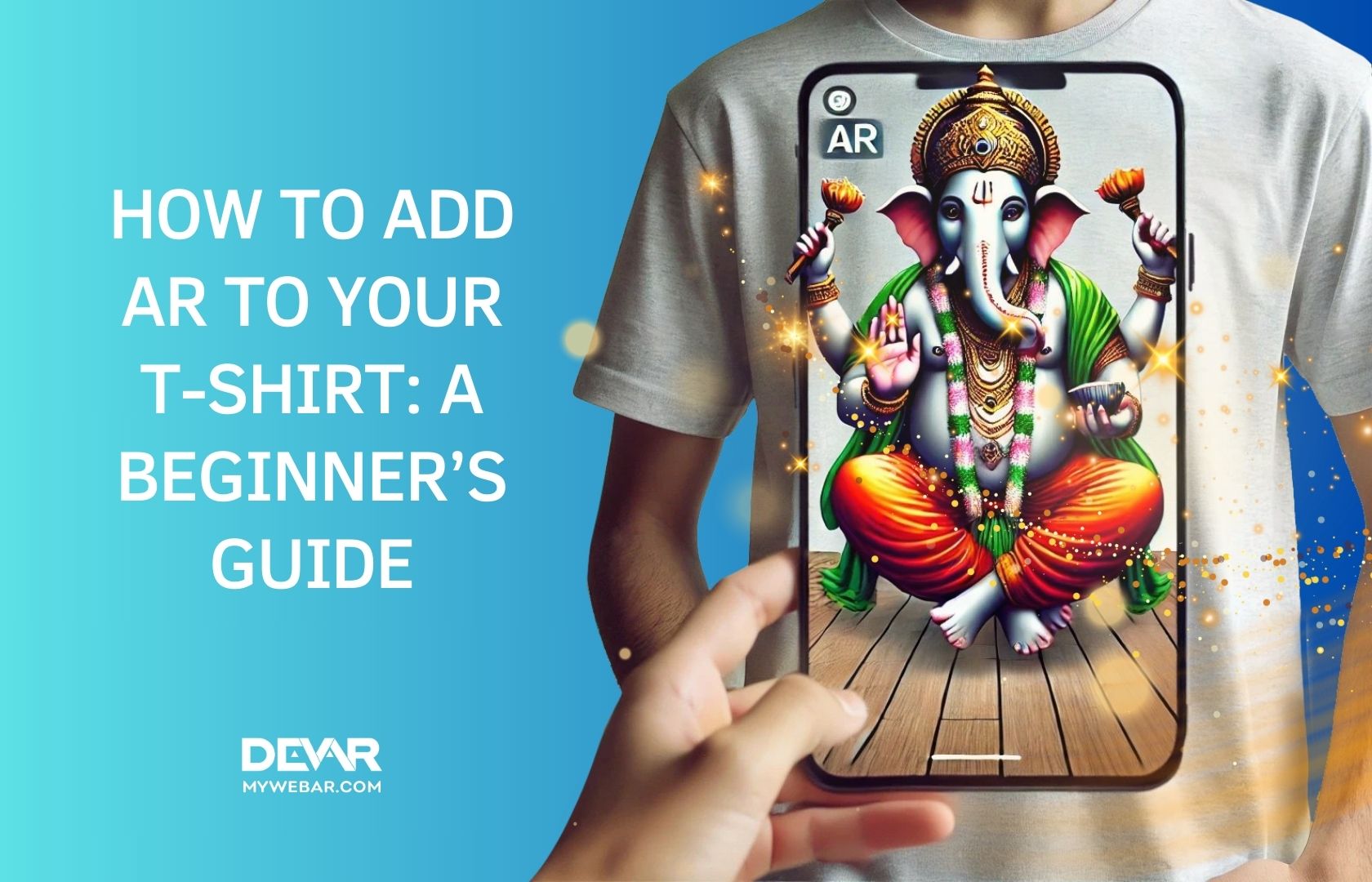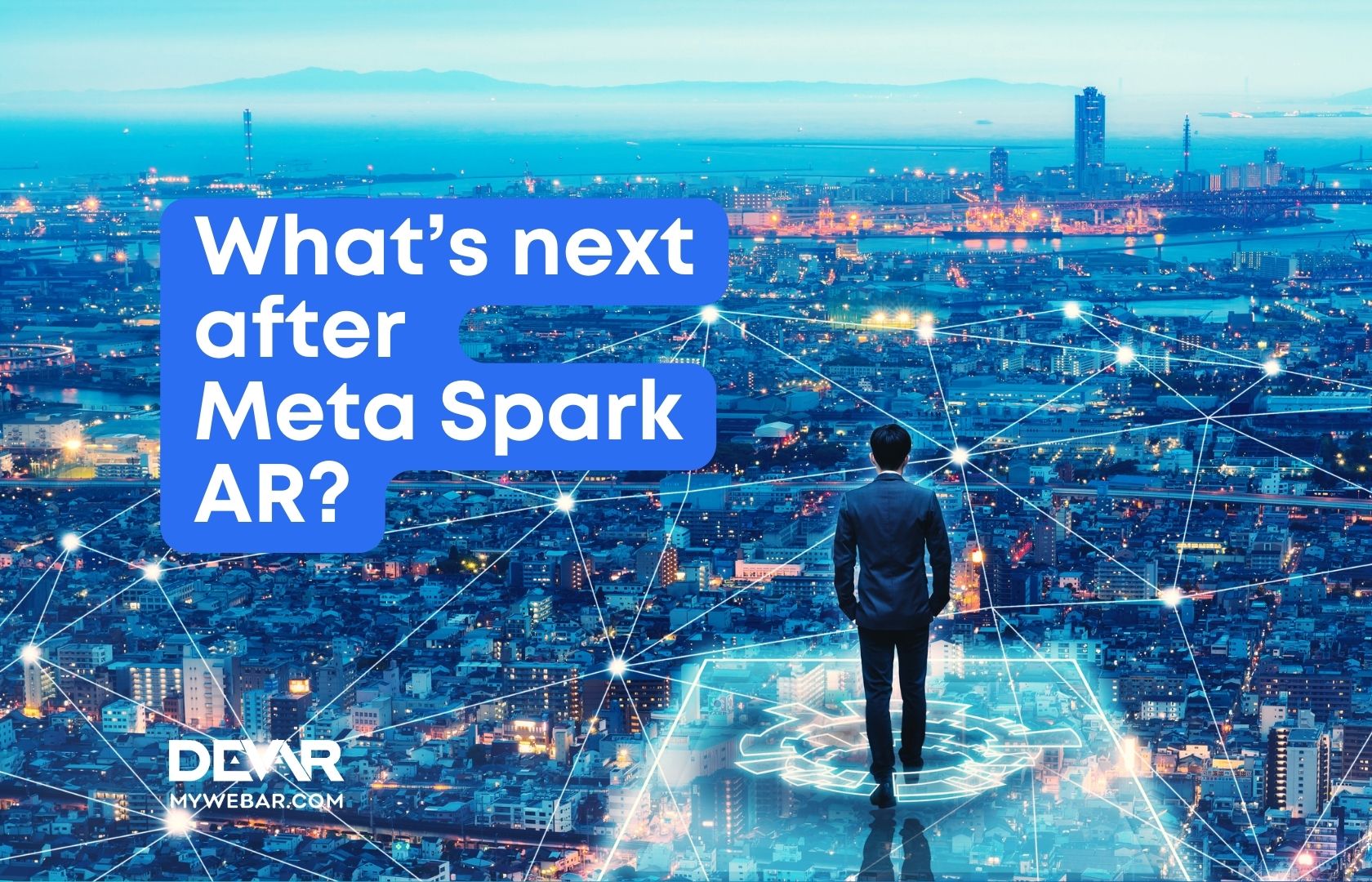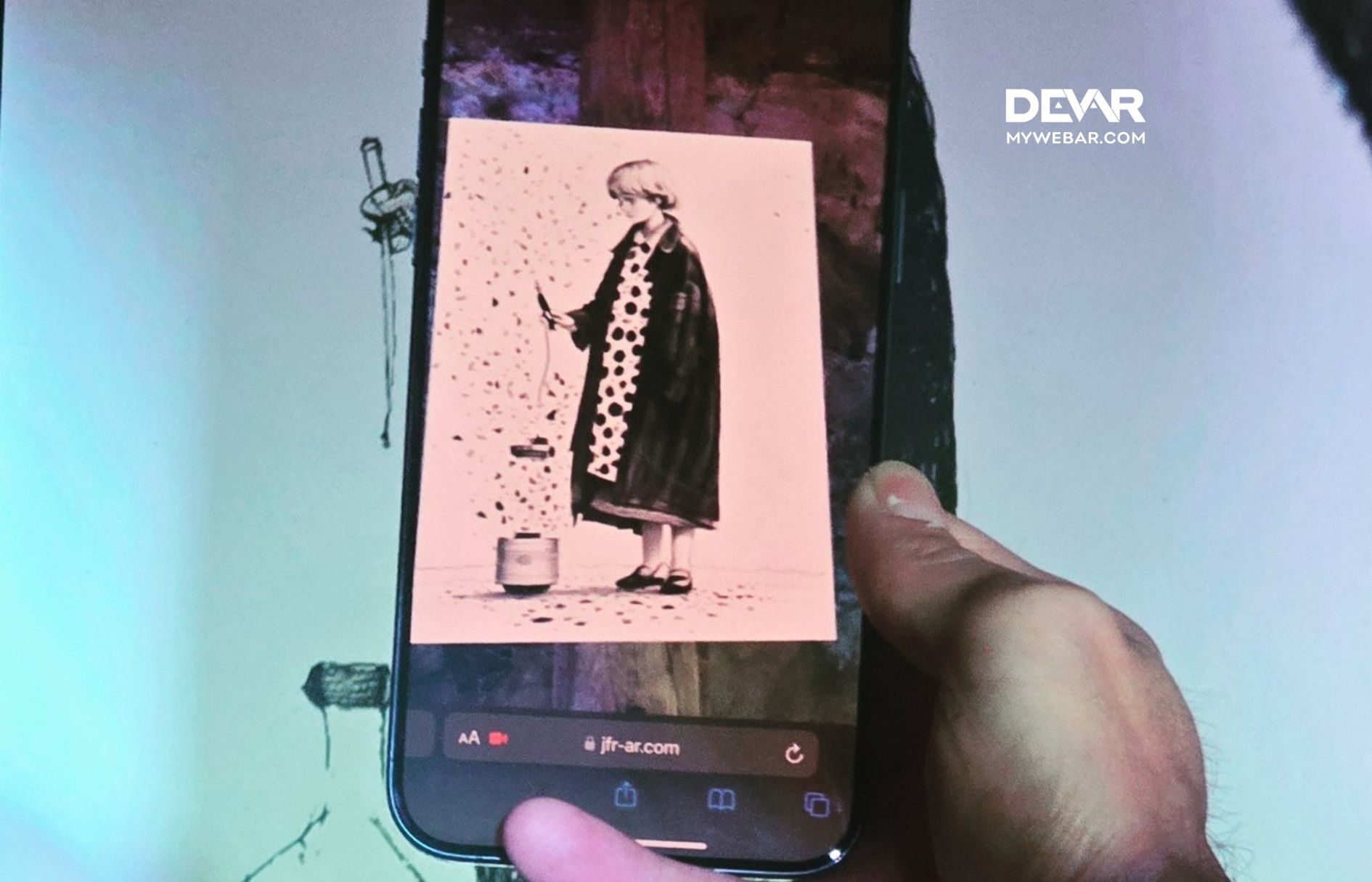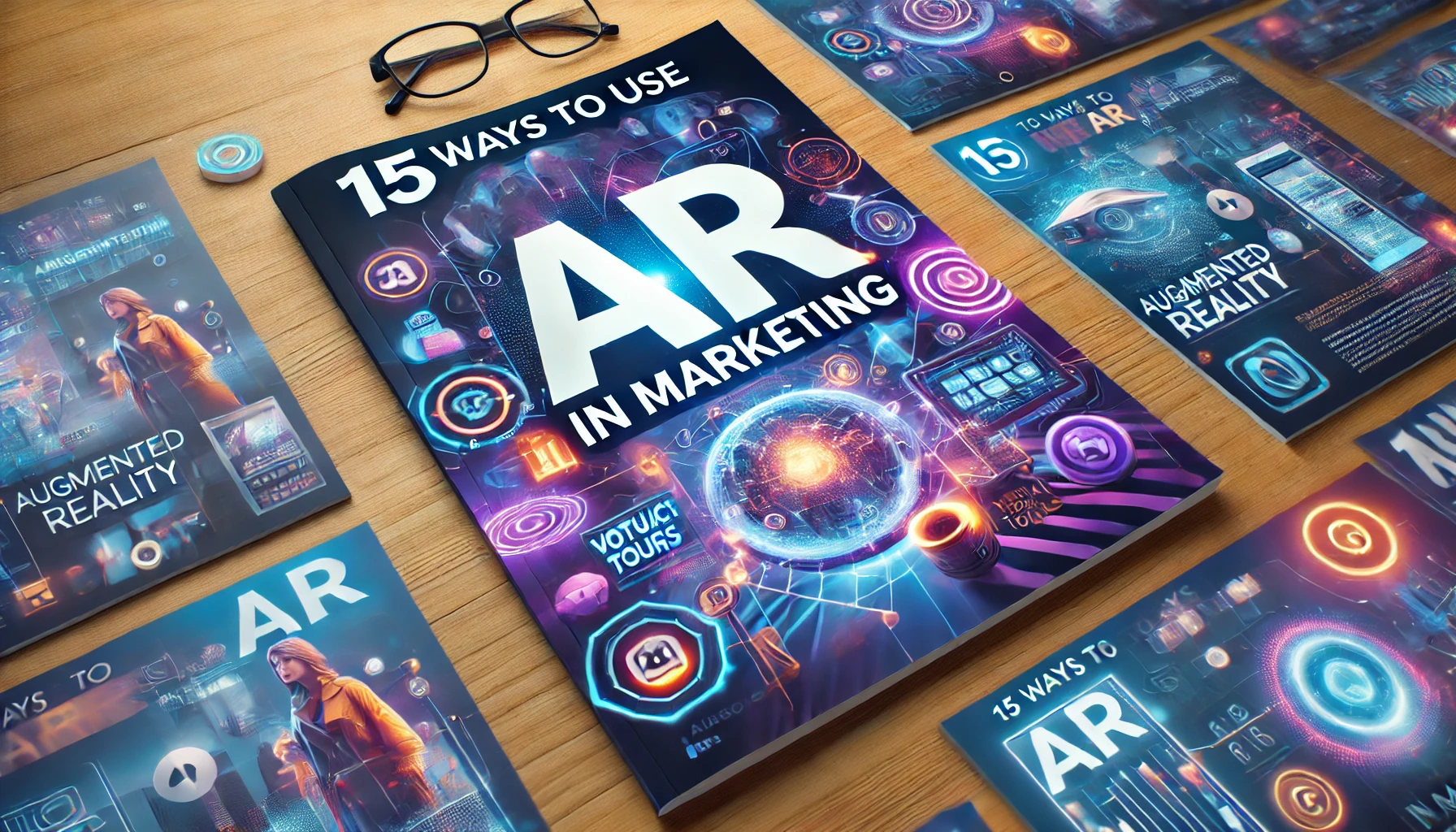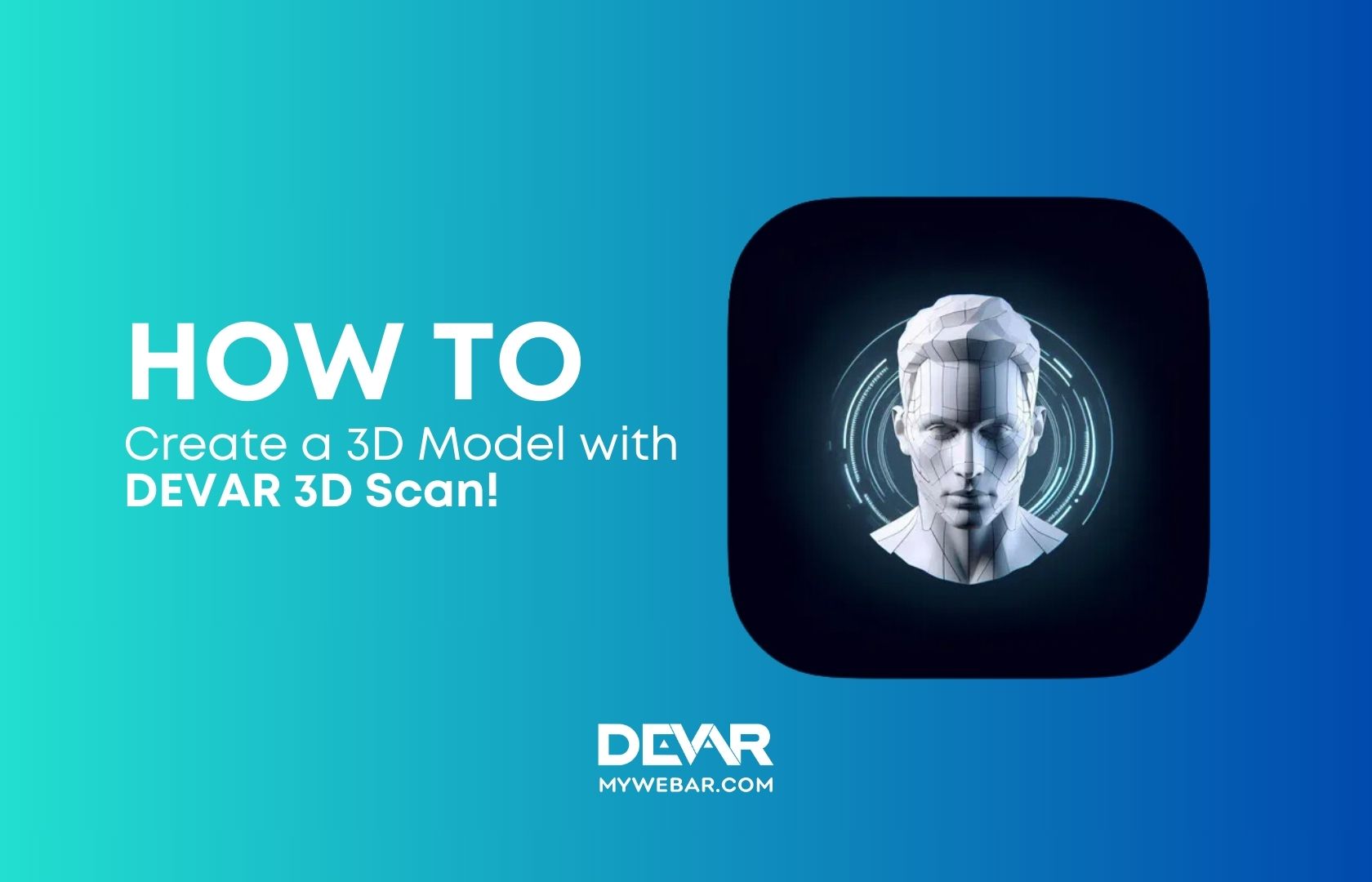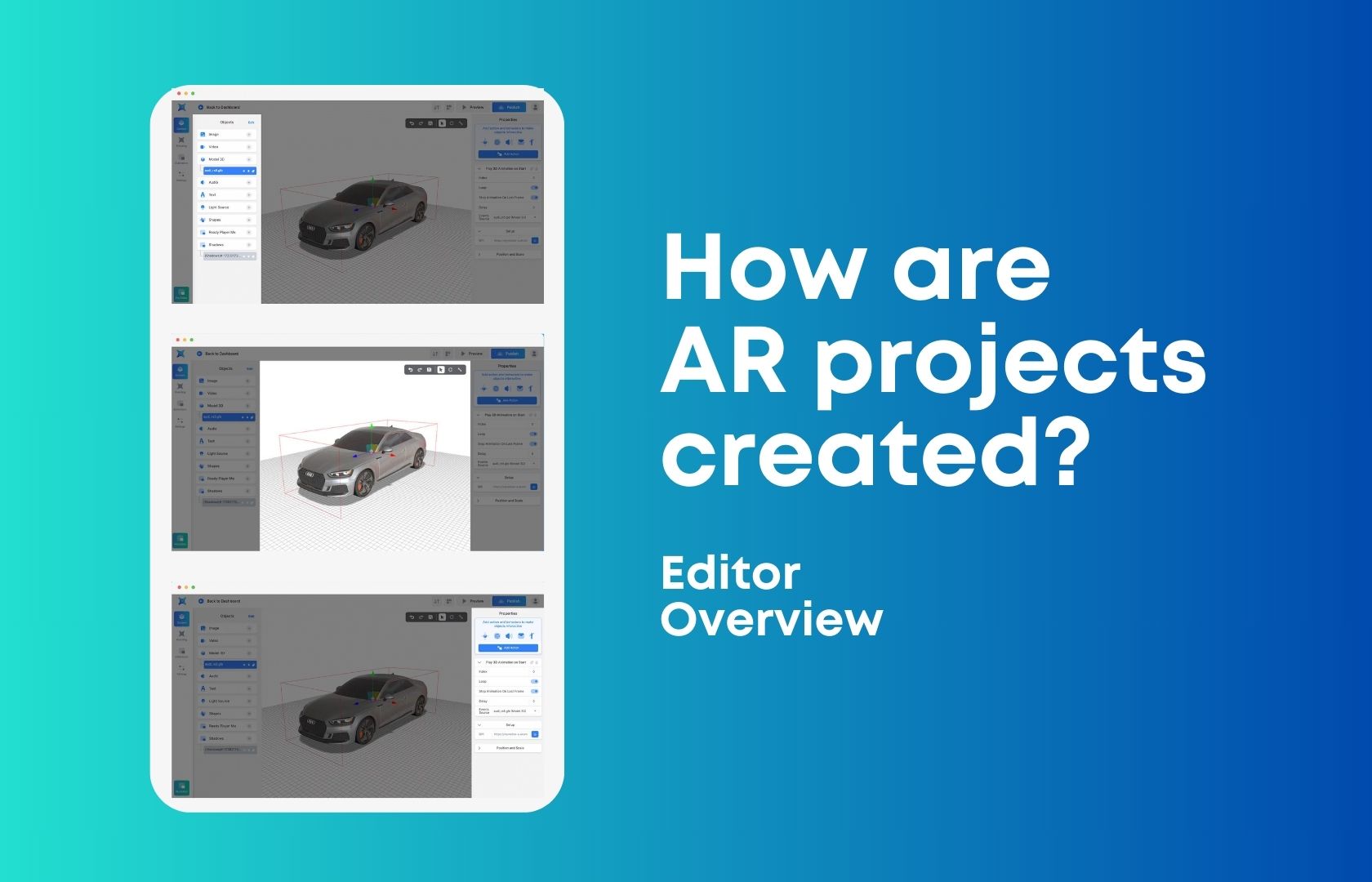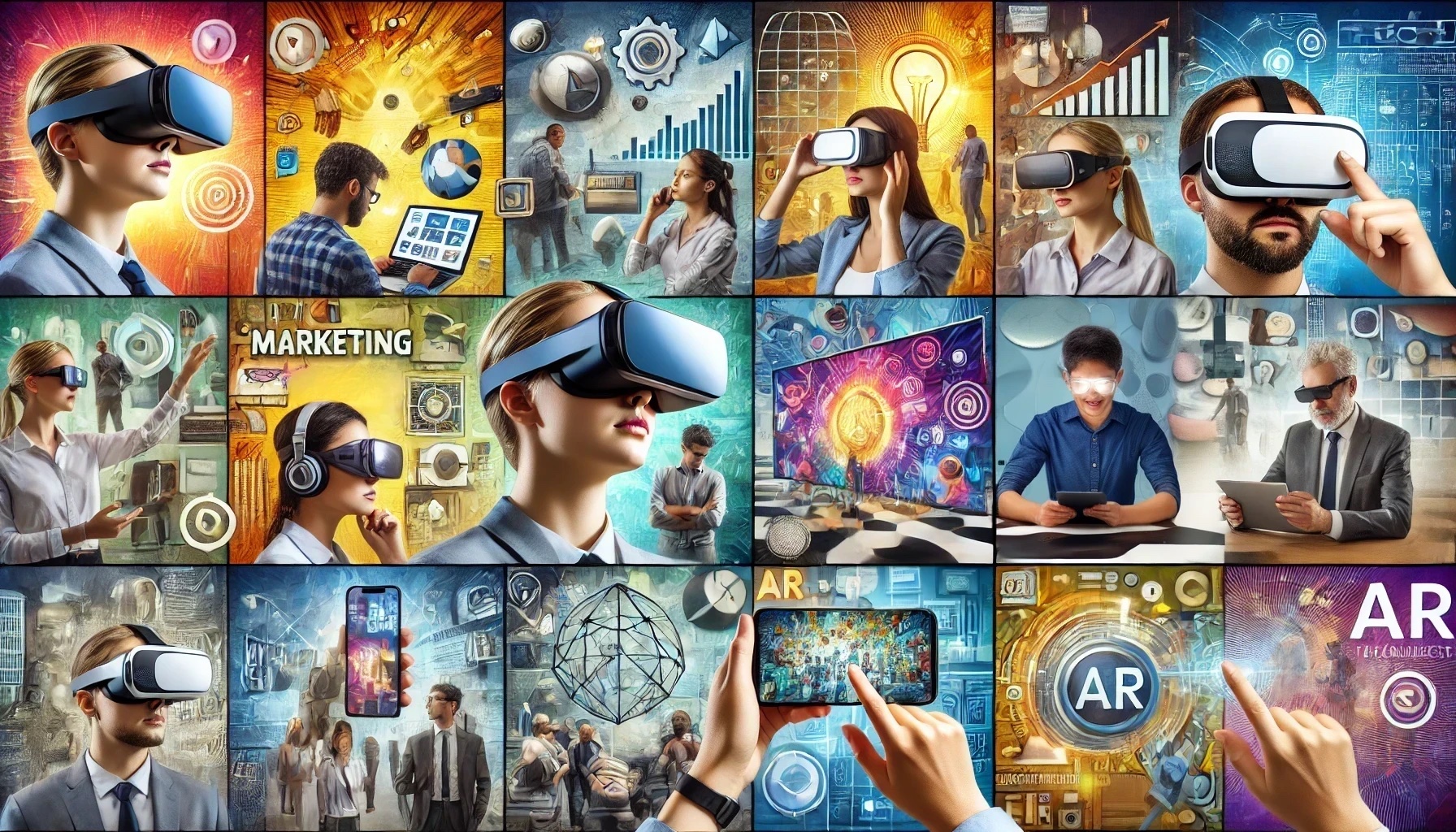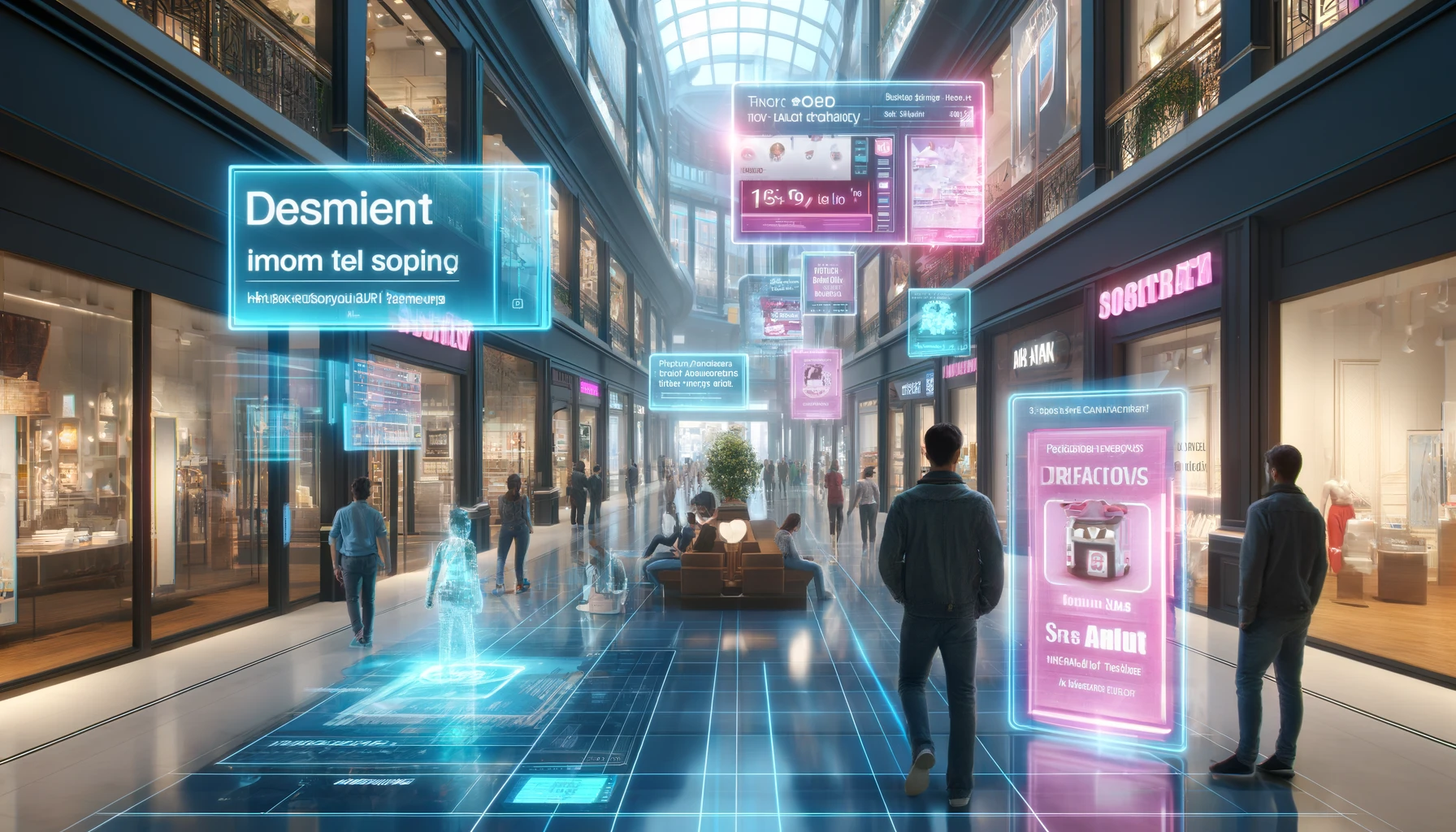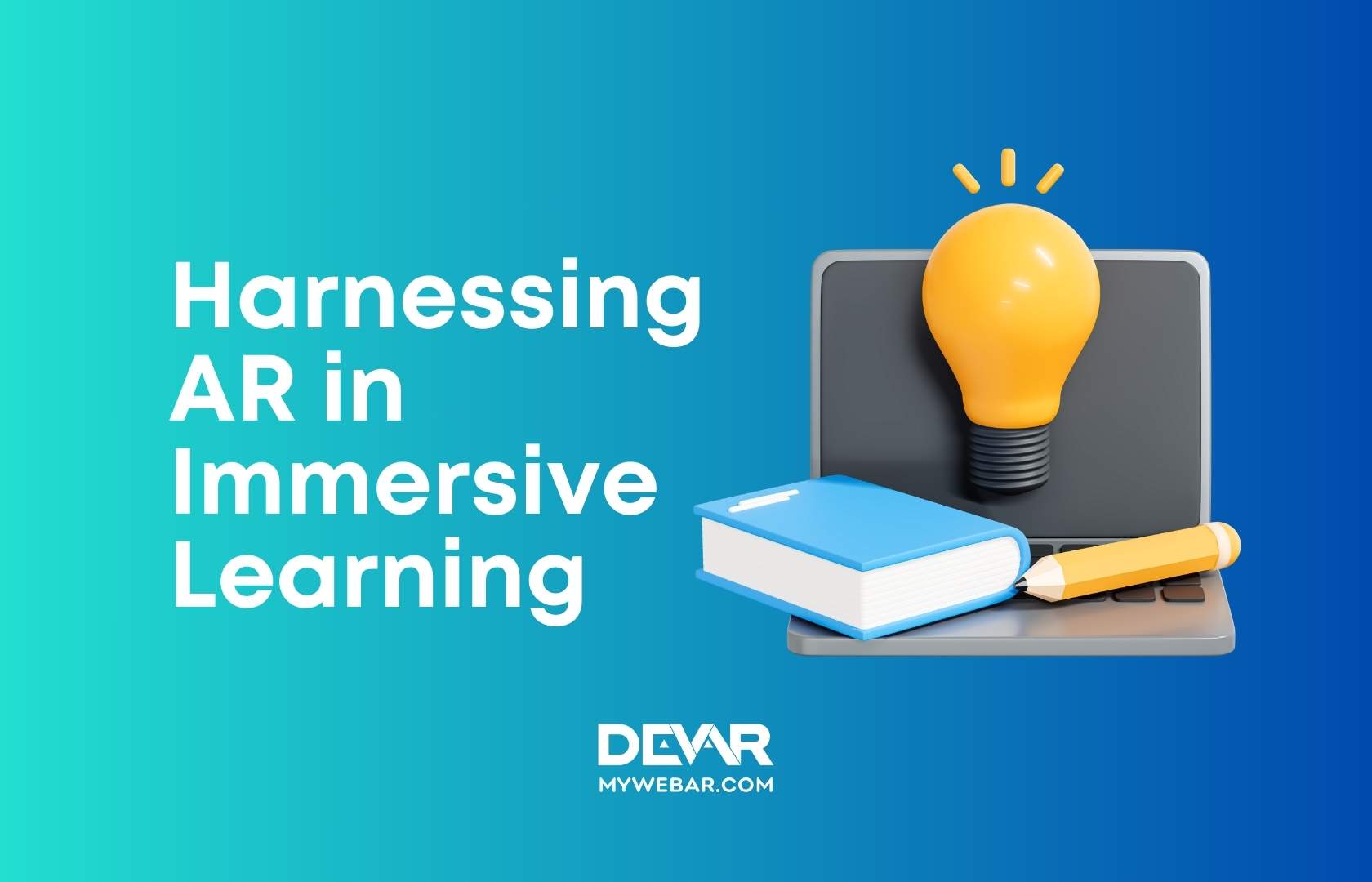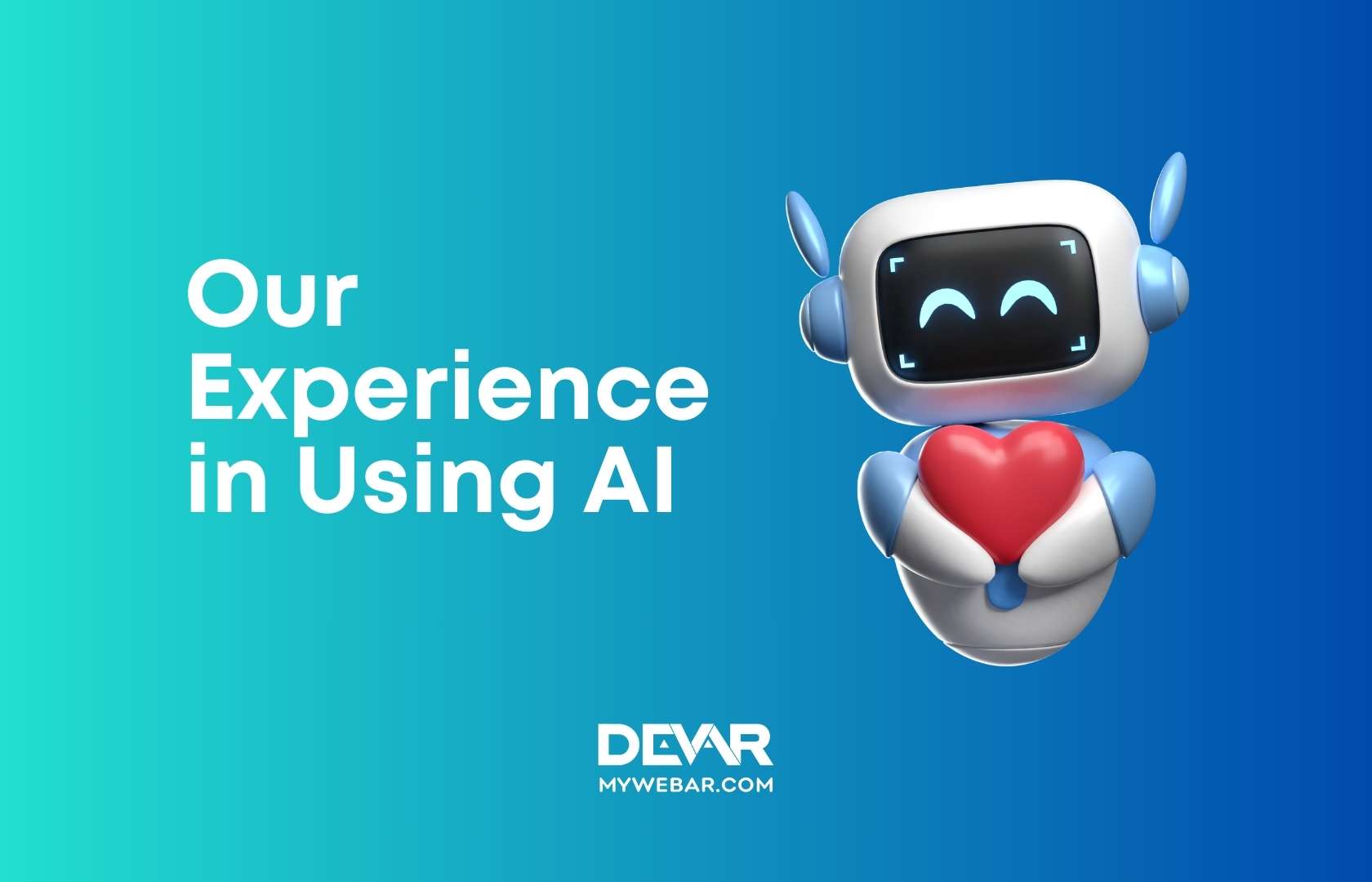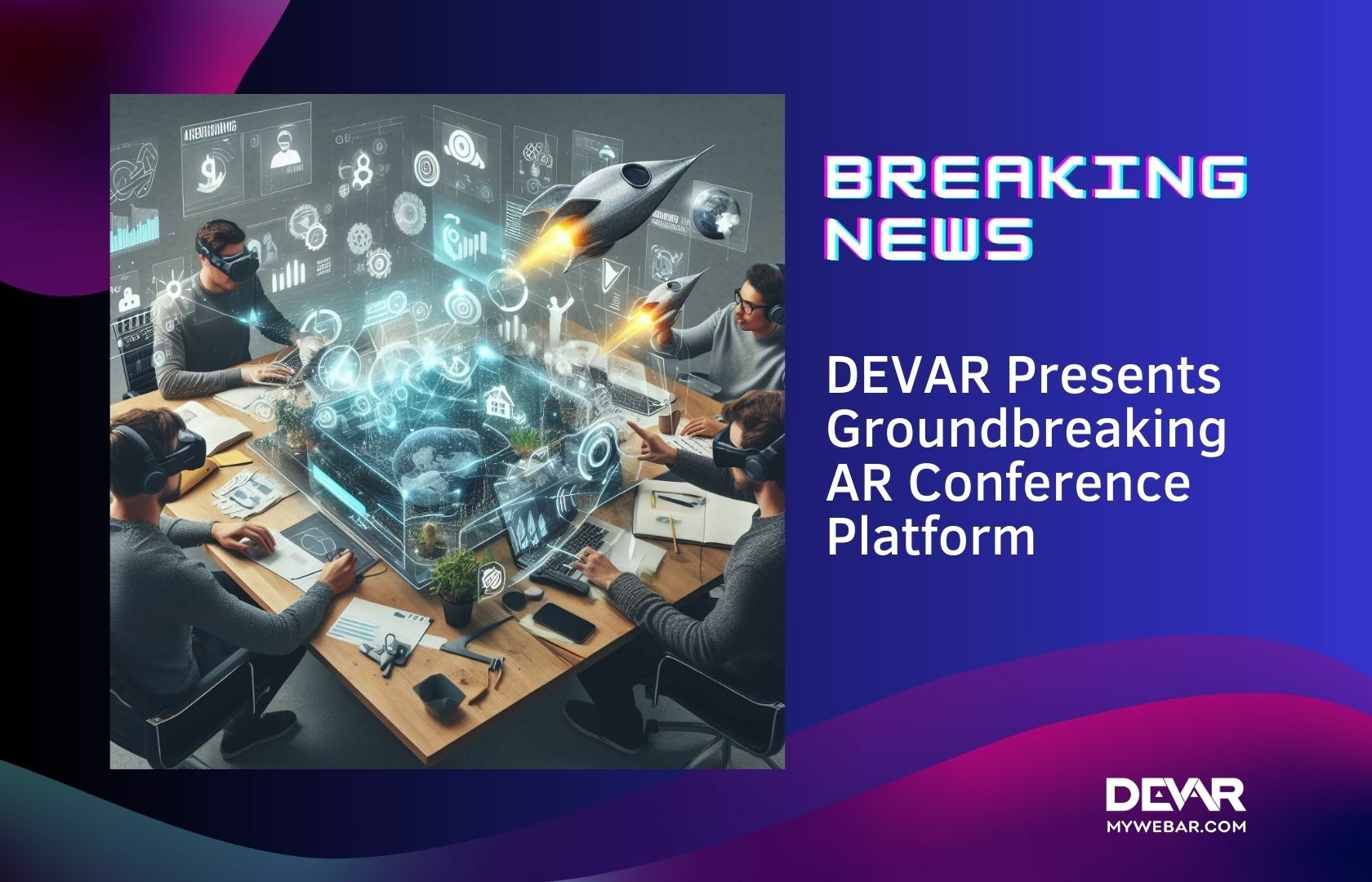Anna Belova, founder and CEO of DEVAR, recently gave an interview to the Cybernews Team. It turned out to be a very deep conversation about immersive technologies, their present, and future. And indeed, there was a very good discussion about the barriers that can be constantly encountered, such as how to embrace innovations in a company. Nevertheless, they are manageable.
Advancing technology is here, and it’s not losing traction
The vast potential of augmented reality (AR), virtual reality (VR), and artificial intelligence (AI) is boundless, thus promising groundbreaking transformations across various sectors. From revolutionizing education, healthcare, and scientific research to redefining marketing strategies, the possibilities and benefits of AR, VR, and AI are poised to reshape the landscape of human experience and innovation.
For more interesting details on how AR technology is transforming the digital landscape, we interviewed Anna Belova, Founder and CEO of DEVAR – a phygital service, or Canva for Augmented Reality that allows users the freedom to become their own AR content generator, thus empowering individuals to be their own author and creator.
Let’s go back to the very beginning of Devar. What has the journey been like over the years?
Devar’s journey started with the dream of bestowing unique powers upon people, effectively making them superheroes.
Imagine that these superpowers grant you the ability to do extraordinary things. They allow you to be whoever, wherever, and whenever you desire. Augmented reality enables you to have super vision. In other words, seeing things that don’t exist and enriching the world with distinct content. Our company was established to craft a new reality.
Many people associate augmented reality with entertainment. But, that’s only a fraction of its capabilities and purpose. Enhanced safety is one benefit of immersive technology. Now, envision how education could transform.
You could observe, interact, learn, and explore realms that were inaccessible before. Imagine gazing upon extinct animals, dinosaurs, mammoths, and countless other species that once roamed the Earth. You could peer into the Earth’s interior or journey through the cosmos.
Our aspirations are steps towards forging a world where everyone possesses the ability to be a creator. Additionally, it’s about fostering a comfortable and secure environment around them. Today, we take the initial stride in shaping certain consumer behaviors. Moreover, this narrative delves into how the world around us can conform to our desires.
The power to recreate emotions, experiences, and memories is our offering. You can relive the past in familiar places, experiencing the emotions once more. You can engage with the future, crafting real-time snapshots of the present. Consider the augmentation of specialized doctors’, engineers’, scientists’, and more. We aim to empower humans as superheroes who can bring on change, aid others, and enhance security.
This is the first phase in constructing such a world. Upon witnessing it, we immediately recognized its potential to create the envisioned future. We realized that augmented reality stands as one of the pivotal technologies in our lives.
The question emerged: how could we apply it today to improve lives? We pursued various avenues. In 2015, we birthed an augmented reality coloring book, where characters sprang to life in AR with colors chosen by the child. We debuted it at a book exhibition in China, observing children’s reactions to this novel concept.
The experience was unforgettable! We bestowed children with the role of co-authors rather than mere observers. This kindled their creativity and curiosity about the world. Now, our AR-enhanced books circulate in 74 countries across 27 languages. It’s inspiring countless children to explore the world through Devar’s lens.
There was initial resistance from conventional firms. Publishers rebuffed our proposal to incorporate augmented reality into their books. They expressed skepticism about its relevance. Yet, children who engaged with our encyclopedias considered other books incomplete. Those books lacked the ability to bring animals, plants, dinosaurs, and more to life. In that way, they weren’t getting the more detailed interaction.
This marked our debut in augmented reality business. Our journey commenced by producing AR-infused books that have transformed the lives of millions of children and parents globally. To date, our AR books have surpassed 13 million in sales, becoming the most successful consumer product line featuring augmented reality.
We noted that AR-enhanced books outsold regular books, with a ninefold increase. This prompted consideration of applying AR to diverse industries. Yet, resource constraints hindered us from accessing all promising markets. Hence, we conceived a platform that extends these opportunities to myriad entrepreneurs worldwide, transcending industry boundaries. Interestingly, most of our users lacked prior AR experience, but recognized its relevance to their enterprises. The sole impediment was a lack of tools to use AR. We dismantled these barriers.
Like other creative domains, augmented reality is becoming progressively more accessible and user-friendly. We’re democratizing this technology to make it a part of everyday life. We educate the market. We show how businesses and users can leverage AR to enhance their lives by fostering convenience, safety, and interest. Our company is careful in constructing an ideal world. One that’s empowering each individual to shape and enhance their surroundings.
Can you introduce us to your phygital solutions? What are their key features?
To begin, let’s define what a phygital product is. It’s an object that bridges the physical world with digital content. Today, augmented reality can be seamlessly applied to any physical object. This means that both we and the users of our MyWebAR platform can generate many AR projects for use in our physical surroundings.
Phygital products have the power to transform ordinary objects into something novel. Something more functional and rewarding through augmented reality. In the context of industrial design, AR doesn’t only provide a wow effect. It incorporates augmented content as an integral feature that adds value for users who interact with or use these objects.
Here are a few key benefits:
First, as our world increasingly becomes inundated with digital content, which we may eventually view through glasses or next-generation lenses, every physical object must find its place in this evolving realm. A phygital product becomes the bridge between the physical and digital spheres.
Second, modern phygital products serve various functions and yield many advantages for business and user experience.
- The undeniable wow effect: Enhancing familiar products with top-notch augmented reality elevates their competitive edge, propelling them to a new level and category.
- Phygitals grant physical items the same functionalities and potential as digital products from a business standpoint. For instance, consider mobile apps. We have a wealth of data about their usage metrics. That includes time spent in the app, popular content, favored features, and so forth. But, what do we know about how people interact with physical goods like books? How much time gets spent reading? Which pages garner the most attention? How long is the engagement? What content resonates with specific target audiences? The potential for such insights is enormous.
Moreover, there are several additional benefits to adopting phygital products in business. Allow me to mention a few, many of which remain undiscovered by the majority, let alone put into practice.
- Understanding popular content and its target audience aids companies in saving resources by creating precisely tailored content that achieves specific objectives and boosts sales. This data eliminates the need for costly trial and error, relying on hypotheses instead.
- Analytics about product usage offer insights into users’ engagement time, preferences, behaviors, and even return frequency. Such information assists in crafting content and products that strongly resonate with the intended audience.
- Phygital products serve as a conduit for website traffic. Imagine you’re a postcard manufacturer with an e-commerce site. When someone scans a QR code featuring AR elements, they’re directed to your website, transforming your physical postcard into a traffic generator. Businesses invest in digital and search channels to attract website traffic. Now, envision your physical products, whether in stores or online, becoming organic sources of traffic. These customers are already loyal, simplifying their continued interaction with your brand. Additionally, this enhances dwell time on your website. That’s a positive impact on your search engine optimization/SEO ranking.
- Phygital products introduce untapped marketing and user engagement opportunities. Integration of physical items with augmented reality content on advertising platforms like Facebook, Snapchat, and Google enables the creation of an engaged audience actively using the product. This opens avenues for retargeting and engaging users through social media and other digital channels. For example, augmented reality on product packaging allows companies to gather data on offline product interactions, subsequently employing that data for retargeting and promotional campaigns.
- Another significant aspect is the cultivation of the right product audience. Marketers often grapple with identifying the ideal audience. Phygital products provide data on existing customers who have already expressed interest. This data then gets used to create a ‘Look-alike’ audience that’s more likely to respond positively, streamlining marketing efforts and boosting the chances of successful sales.
In conclusion, phygital products not only evoke awe and enrich user experiences, but they also unlock a lot of marketing and user interaction possibilities that weren’t explored before.
In your opinion, which types of organizations or users would benefit from implementing Augmented Reality solutions? Why might companies be slow to embrace innovative technologies?
Beyond the well-established sectors like e-commerce, entertainment, and education, there exist lesser-discussed opportunities that hold substantial potential. These involve the incorporation of AR technology into physical goods and products that users engage with. The integration of AR into offline products is becoming an integral aspect of industrial design. It’s introducing novel advantages that might not be immediately clear to manufacturers and the wider market.
First, there’s the enhancement of user experience. Augmented reality has the capacity to transform an everyday product, such as a milk package, into an emotive journey akin to a visit to Disneyland. By engaging all three perceptual channels — visual, auditory, and kinesthetic — AR elevates product interaction and consumption to a profound, qualitative level. This not only bestows users with a memorable experience but also establishes the brand as memorable and capable of maintaining continuous consumer interest.
Second, there’s the realm of data accessibility. AR technologies provide a distinctive avenue for collecting data on user-product interaction. For instance, the average viewing time for a single AR scene stands at three minutes. That’s a stark contrast to the mere 15 seconds for conventional commercial videos. Such data empowers manufacturers to streamline operations, analyze user behavior, and personalize products and content based on user preferences.
It’s important to note that many companies in traditional industries remain unaware of the possibilities and benefits that augmented reality offers. Still, for those who grasp the potential of this technology, it presents a true ‘blue ocean’ of opportunity. Allow me to share a few examples. Our collaboration with Hasbro, which commenced in 2016, is one such instance. Together, we developed a line of books and coloring books with augmented reality. We were transcending mere innovation to establish an entirely new direction in their licensing business.
This led to the creation of a novel category of goods, enabling them to attract new partners in regions where other similar categories had already saturated the market. Hasbro managed to secure partners in 10 new countries. This effectively expanded their augmented reality coloring book line. It marks the emergence of a new business model that unveiled previously unexplored facets in an area where innovation appeared to have reached its limits.
Another case study comes from one of our clients in Germany who initiated an augmented reality postcard business a year ago. Starting on our no-code AR platform for brands and creators, MyWebAR, they began with 10 postcards. Today, their series has expanded to encompass more than 200 postcards.
This direct growth trajectory illustrates that augmented reality products can stimulate the growth of start-up ventures within seemingly conventional industries. Augmented reality in postcards catalyzed rapid expansion, enabling a 20-fold increase in their product range within a single year. Such scaling signifies not only success but also the potential to transcend traditional market competition.
Incorporating physical products with digital content through a ‘phygital’ approach yields significant advantages. It’s permitting companies to transcend conventional competition. This transformation impacts user experience, product category dynamics, and a company’s position within its industry.
How did the recent global events affect your field of work? Did you add any new features as a result?
Two significant shifts have come to the forefront in our industry. Firstly, there’s the rapid expansion of generative AI, with companies actively exploring its diverse applications. Secondly, we must acknowledge the recent unveiling of Apple’s Vision Pro device.
Moving forward, I’d like to begin by sharing my thoughts on Apple’s presentation, a pivotal event for us. The Vision Pro is set to become an integral aspect of our daily lives, marking Apple’s resolute entry into the augmented reality sphere. Therefore, the business sector needs to proactively adapt to this evolving reality and discover innovative ways to engage users in this new realm.
Moreover, Apple’s launch heralds a new era for AR/VR devices, signifying that Apple will annually update its devices to make them lighter, more efficient, and more functional, in line with the Vision Pro glasses trend. We firmly believe this marks the inception of a substantial trend. Furthermore, we’re closely monitoring the device’s development, confident it will ultimately challenge the status of a full-fledged phone replacement.
Regarding the advancement of Generative AI, we’ve charted our journey across several stages. At the initial stage, we encompassed the creation of a no-code editor and platform, enabling anyone to craft augmented reality content without technical expertise. This editor hinges on Computer Vision technologies, including our proprietary 3D object tracking know-how, which seamlessly incorporates digital content into volumetric objects.
The next step involves generative content creation in a semi-automatic mode. Now, AR images or 3D content can get generated from textual descriptions, eliminating the necessity for 3D models and designers. The forthcoming phase aims to make AR project creation even more effortless, possibly by employing voice or text commands. Describing a project will prompt the system to generate it autonomously within minutes, providing you with a link to view the AR project.
This progression isn’t simply a pursuit of generative technology trends. Instead, from the outset, our mission has been to break down barriers to augmented reality content creation and consumption. One pivotal challenge has been the complexity of crafting AR objects, entailing programming, technical skills, and model design. However, our tools are systematically dismantling these barriers.
Allow me to reiterate. Our no-code platform empowers you to forge AR content devoid of technical expertise. Through a text-based generative AI system, you can generate a diverse range of augmented reality content. Our upcoming phases will further streamline the creation process, enabling you to initiate projects with spoken phrases. Picture yourself on the street, altering your surroundings to pink, conjuring dragons or dinosaurs, or envisioning extinct animals.
Consider revisiting cherished childhood locations where you spent time with your parents, at parks, picnic spots, etc. Additionally, augmented reality can help recreate and re-experience these cherished memories. Furthermore, this represents one of the most valuable applications of AR – immersing oneself in joyful childhood recollections. Ultimately, this will be achievable through technology guided by the spoken word.
Why do you think companies sometimes hesitate to embrace new and innovative solutions that would enhance their operations?
The question of why companies often shy away from embracing innovation remains a persistent enigma. Why, despite Nokia’s focus on phones, did it fail to become another Apple? Several factors contribute to this phenomenon.
First, various companies harbor a fear of being pioneers and opt to follow established trends. Risk aversion drives them to wait for tangible results from others’ experiments before venturing into uncharted waters. This reluctance may also stem from apprehension about jeopardizing their current standing, leading them to cling to proven methodologies. Varying interests and motivations within a company further complicate matters. Some focus on growth and development, while others emphasize showcasing performance. Some are averse to change due to the potential for failure.
Second, a lack of requisite knowledge and competencies often hampers companies from exploring innovative avenues. Moreover, traditional entities like publishers entrenched in their conventional processes might find it arduous to cultivate proficiencies in emerging technologies like augmented reality. This necessitates establishing an IT department and acquiring entirely new skills, which can be both costly and challenging for conventional businesses.
Even so, the advent of web AR technology has made it feasible to foster IT competencies within a company without necessitating programming expertise. Today, individuals of all technical proficiencies are capable of generating AR content for their products.
The third impediment lies in awareness gaps. Many individuals remain unaware of the potent utility of augmented reality technology. If they comprehended how AR could slash content creation costs by millions of dollars annually, their perspective on the technology would undoubtedly shift.
The fourth noteworthy factor pertains to the innate human reluctance to embrace the new, often leading to a reluctance to veer away from familiar paths. The majority of people tend to tread the familiar ground of tools they’ve tested before. Some may perform better, others worse, but they function effectively. Introducing something new, untested, and uncharted can trigger a sense of anticipation, waiting for a trailblazer to lead the way.
Essentially, the maxim ‘change or perish’ applies. Yet a significant number of companies remain in denial about this reality. A paradox that surprises us. But, we comprehend the underlying reasons, and we are diligently striving to surmount these factors. We’re continuing to engage more companies and diverse business domains in the augmented reality industry.
In your opinion, where can we expect to see Augmented Reality solutions be used more often in the near future?
I can confidently predict that augmented reality will find extensive utilization across seven key domains in the upcoming period. That includes:
- E-commerce: A study conducted by Analytics Insight in 2022 revealed that customers using AR spend 20.7% more time within e-commerce apps and view 1.28 times more products. Notably, these AR-engaged customers also demonstrated a 19.8% higher likelihood of making purchases during their sessions compared to those who did not employ AR.
- Navigation.
- Phygitаl: This innovative blend encompasses a diverse spectrum of industries.
- Marketing, specifically Phygitаl Marketing.
- Education.
- Entertainment.
- Social Media.
I’m not talking about the potential role of AR in medicine, construction, automotive, military, industrial production, and so on. In all these areas AR has already been successfully applied for a long time.
To provide some insights into common AR experiences within businesses, particularly those observed on our MyWebAR platform, consider examples such as packaging, marketing materials, menus, souvenirs, postcards, business cards, T-shirts, flyers, posters, events, beverages, art, and education.
In sectors where customer interaction and robust brand engagement are pivotal, augmented reality is set to gain more frequent and accelerated traction. Furthermore, as businesses grasp the boundless possibilities this technology offers, they can distinguish themselves amidst a sea of competitors and garner heightened attention from their target audience.”
Augmented reality represents an unparalleled competitive edge, and I wholeheartedly recommend that entrepreneurs promptly integrate this technology into their ventures. Additionally, embrace experimentation and education, guiding your customers through incorporating these novel technologies.
What predictions do you have for the future of EdTech?
Augmented Reality (AR) and Virtual Reality (VR) stand as two transformative technologies poised to reshape the landscape of learning, influencing education, content creation, and delivering immersive experiences. Defying the typically conservative nature of the education sector, however, over 200 universities worldwide, including esteemed institutions like Duke and Yale, as well as thousands of schools, have already embraced our platform to incorporate AR for educational pursuits.
AR finds applications in a diverse array of student projects, spanning from art to lab work, and even tackling complex subjects challenging to depict in 2D. Moreover, imagine a scenario in a medical school where a professor elucidates the intricacies of the heart’s structure and function. Furthermore, envision the professor sharing an AR link featuring a three-dimensional heart image with the entire classroom. As students open the link on their devices, they delve into a detailed visualization of the discussed topic, offering an immersive level of engagement that surpasses traditional learning expectations.
The creation of educational content through the integration of AR/VR and Artificial Intelligence (AI) will soon become a seamless, rapid, and enriching process, affording an unparalleled level of immersion in learning materials. Numerous studies already attest to AR’s heightened efficacy in bolstering memorization. Hundreds of thousands of children have mastered the alphabet with our AR book “ABC.” Additionally, we’ve witnessed children with special developmental needs grasping the alphabet via an augmented reality book, a feat previously unattainable with conventional texts.
In technical fields necessitating manipulation of volumetric parameters, AR proves exceptionally valuable. Augmented reality facilitates the visualization of geometric volumetric shapes, the creation of intricate drawings, cross sections, and the layering of content. These possibilities were unimaginable in the past, even when we ourselves were children.
So, the future of education lies in the integration of immersive technologies. These groundbreaking tools redefine learning paradigms, offering unparalleled prospects for deep engagement with educational content. Their effectiveness is already evident in educational institutions across the globe, and their role in education is poised to expand even further.
Would you like to share what’s next for Devar?
We envision a world where every individual possesses unique capabilities to shape and enrich their surroundings as they desire. This world is designed to be comfortable, fascinating, secure, and convenient. In due time, almost everyone will evolve into creators empowered by immersive technologies. Central to this transformation will be Generative AR technologies, fundamentally altering consumer paradigms regardless of the device they use. Now, it’s mobile devices, and in the future, AR glasses will take the forefront.
As entrepreneurs, our initial aspiration was to craft a teleportation mechanism. While current technology falls short of that achievement, we remain confident it will materialize someday. In the interim, our endeavors are steps toward building a universe where everyone shapes their environment to evoke comfort, security, and fascination. This narrative revolves around molding the world to our desires.
Today, our technological roadmap is focused on rendering the creation and consumption of AR experiences seamless and effortless. Moreover, the present landscape already permits you to craft AR encounters sans programming skills. Furthermore, the forthcoming strides encompass generative AR content creation.
We recently introduced the initial iteration of Generative AR text-to-3D, enabling the creation of 3D models through text alone. By year’s end, we intend to refine this technology to a level rivaling top-notch design studios.
The next phase entails Generative AR text-to-AR, enabling the straightforward composition of comprehensive AR projects via text.
Our blueprint encompasses the evolution of Generative AI technologies to streamline and expedite the AR experience creation process. Ultimately, we aspire to achieve a juncture where AR is effective solely through voice commands.
